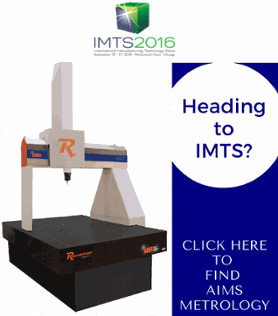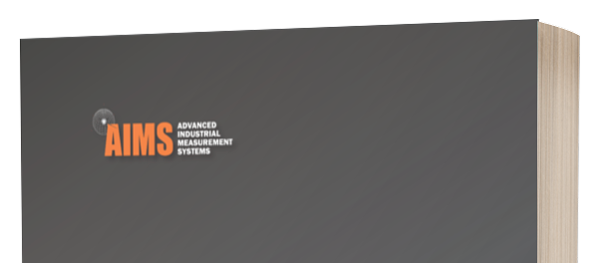"It's a jungle out there." The idiom was coined to describe situations considered dangerous or threatening. But it can also apply to purchasing a new CMM, especially when it comes to navigating the different software and hardware choices.
Depending on your application, it can be difficult to know where to start. Conventional prismatic geometry can’t be used to define or measure free form surfaces. Understanding the kind of data your applications will require is an important first step. But you also have to consider other variables. For example, you never know what your customer will send you. The software functions you need today may not be what you need tomorrow. You have to ask yourself what your objectives are and evaluate what you really need from your hardware and software. Making a checklist can be a helpful tool. Paying attention to the way data flows and the standards customers are using is another consideration.
Take Product Manufacturing Information or PMI. Also known as Model Based Definition, the standard has been around for about 20 years but manufacturers have been slow to adopt it until recently. PMI is now being used in CAD programming because it allows engineers to put feature identification in corresponding geometric dimensioning and tolerancing. The feature allows data to flow easily upstream and downstream. Boeing was the first to incorporate PMI and, to date, its use has largely been confined to the aerospace industry. It's likely though that PMI will start to crop up in other industries. Making sure your software can handle PMI and has the reporting capability to maintain the standard’s format can save you a lot of headaches down the road.
Statistical Process Control and high level programming flexibility should be included in your software package, but unfortunately not every product has these elements. Subsets like conditional branching, operator prompting and parametric programming also need to be considered.
When examining software options you must ask what types of alignment algorithms you'll use. You must also be sure your software choice can support your needs. MODUS software stands out in this and other key areas when compared to similar packages on the market.
MODUS is built on industry standards that include I++DME protocol, native DMIS and Microsoft SQL server database. It’s designed to fully support CAD-based inspection. In addition to a comprehensive range of programming functions, both offline and by the CMM, it offers easy interface to assist with measurement best practices. This can and should include measurement and construction functions. Gears, slots and curves are common features but what if you have to construct a 3D curve or circle, or build an edge radius?
And then there are programming needs that may require you to have external calling capabilities. For example, you may need to manipulate data in a manner that is not CMM related. The ability to stop mid-program and call up this function may be a requirement your customer asks for. Recently I had a customer that needed their data formatted to export to a home-brewed analysis system with specific header details, columns, spaces and decimals. It was easier to write this program and compile it, then ask the CMM to reach out externally and call it up.
Scanning is another hot topic these days and it’s one that requires a lot of data. When it comes to this feature, not all CMMs and software are the same. Renishaw has developed the REVO and PH20 probe which has allowed them to delve deeper into scanning than just about anyone. If product changes are going to influence the data your customer wants, you'll have to be able to accommodate those modifications.
While there are fewer questions to ask about hardware – or the CMM – getting the right answers can be equally vital to your value stream. The first thing to figure out is where you'll use the CMM. Will you use it in a laboratory or on a shop floor? The answer to that question will dictate whether or not you need active vibration isolation, temperature compensation, and so on. AIMS Metrology has specifically engineered its LM series CMM with linear motors and air bearings to meet the special requirements of the laboratory. AIMS’ 5-axis mobile HB Series CMM is geared to stand up to the harsh environment of the shop floor.
You will also want to “kick the tires” and “look under the hood” when considering a CMM. What size machine do you need? How long does the probe reach need to be for your applications? Are replacement parts readily available? Years ago, CMM companies paid a lot more attention and products weren't released until they were market-ready. Now, the rush to get new products to market sometimes means a machine has been designed to fail or is half-baked. If you don’t take the time to do your homework, you’ll discover the equipment’s weaknesses the first time it takes a hit (and guess who has to pay for the repairs?).
With the big drive toward greater use of robots, real-time data, smart factory environments and lights out operations, manufacturers need measurement tools and software that can communicate with other digital equipment including conveyors and machine tools. If this is your end game – having software and CMM equipment that can support these objectives is mandatory.


